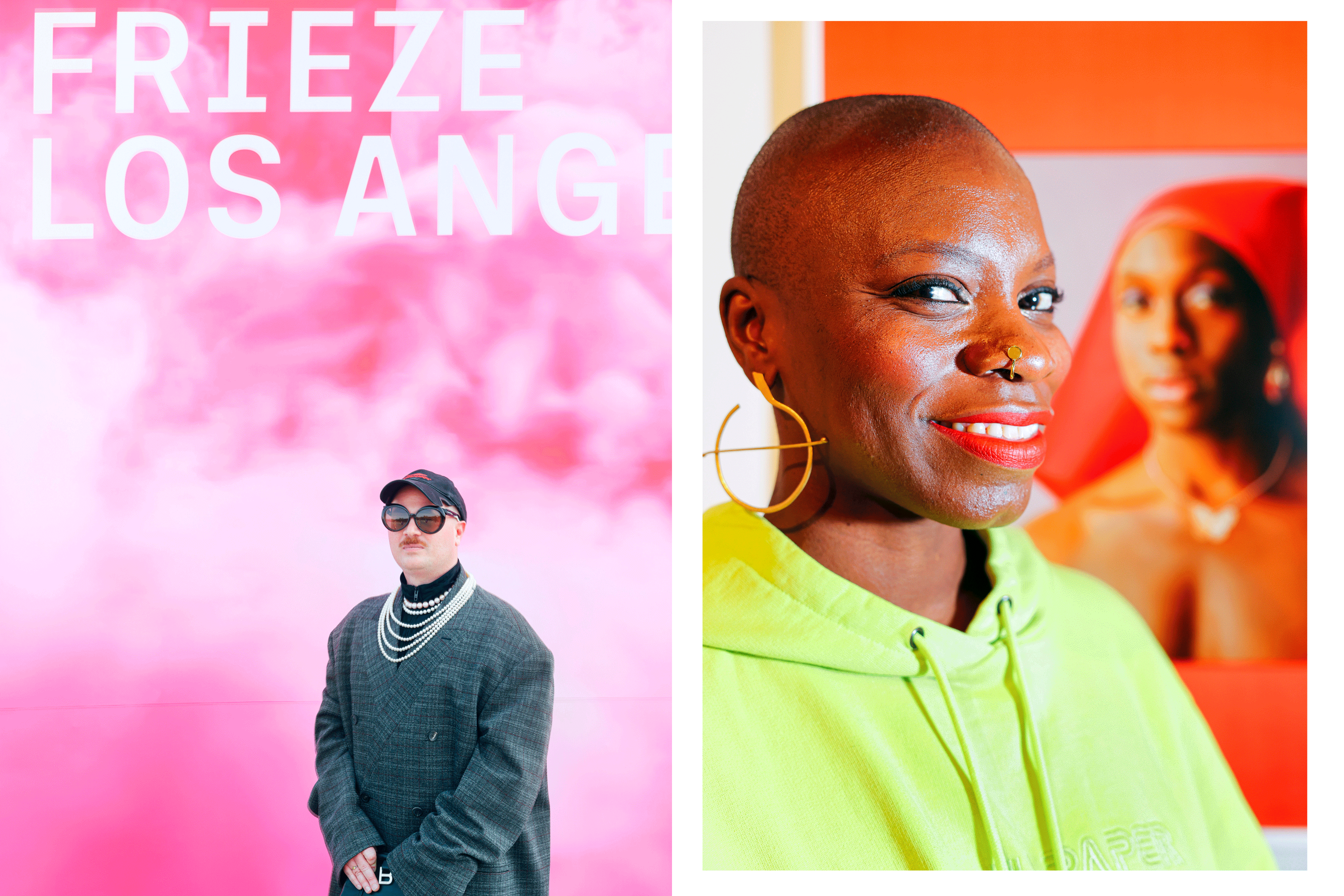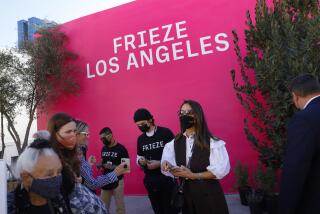Western Art Dealers Flock to Hong Kong
- Share via
HONG KONG — Hong Kong, where the rich squander millions of dollars on flashy status symbols such as pink Rolls-Royces and gold-plated bathtubs, has long been shunned on the international art circuit as a cultural desert.
But smarting from a two-year slump at home, Western dealers are flocking to the British colony to try to persuade Asian millionaires to shift their spare cash from stocks and property into art.
The global slump in the art market that followed the speculative frenzy of the late 1980s has bitten deep, and the search for new markets is on with a vengeance.
About 75 of the world’s top dealers from Europe, the United States, Latin America and Asia have descended on the British colony hawking paintings and sculptures worth about $200 million at Art Asia, the region’s first big international art fair.
“It’s a growing market for us in Southeast Asia. Like most aggressive companies, if you don’t grow, you die,” said Gilbert Lloyd, director of London-based Marlborough Fine Art, one of the world’s biggest private galleries dealing in modern masters.
Organized at a cost of $2 million by Los Angeles-based entrepreneurs David and Lee Ann Lester, who stage similar fairs in Miami and Chicago, the event is part of a burgeoning trade fair circuit in Europe and the United States that bypasses auction houses to bring together collectors and dealers.
Among the masterpieces hung in Hong Kong’s steel and glass Convention Center are works by Pablo Picasso, Henri Matisse, Vincent Van Gogh, Claude Monet, David Hockney, Auguste Rodin and Henry Moore.
Alongside are paintings by Chinese artists ranging from realists Chen Yifei and Zhang Daqian to lesser-known political pop artists with works including fluorescent images of the late Chinese leader Mao Tse-tung.
The fair is highly risky for the Western dealers, local experts say.
“It’s a big gamble for them,” said Steve McGuinness, managing director of Hong Kong-based Plum Blossoms (International) Ltd.
“The best markets in the world have been in countries where they are rich and they had a high cultural level,” said Angel Samblancat, director of Barcelona’s Galeria Joan Prats.
“We have hopes, that’s why we are here. But we also have doubts,” said Samblancat, who took one look at the colony’s premier cultural venue--a pinkish-gray building popularly referred to as ‘the ski jump’--and said: “It looks like a concentration camp.”
Jeffrey Bergen, director of ACA Galleries of New York, said the education of Asian collectors--given the singular lack of museums and art galleries--could take some time.
“The easiest part is writing a check. The hardest part is to train your eye,” he said.
Hong Kong was chosen as the site for the fair because of its position as financial hub of Southeast Asia, as well as its lack of sales tax, import-export duties and currency controls.
An added attraction is its location at the center of the Chinese art world. “Many overseas dealers are looking for contemporary Chinese works to bring back,” said organizer Lee Ann Lester, adding: “People are saying, somewhere in China is the Picasso of the 20th Century.”
Dealers say this is a good time to buy Western art, with prices off some 20% to 30% from their 1989 peaks, but few aside from very big galleries with an established clientele know exactly who their buyers will be.
Lester expects strong interest from collectors in Singapore, Taiwan, South Korea and Indonesia, while other dealers confess to having little clue.
Glenn Engman, asked why he decided to brave an unknown market to promote a single Colombian artist, Orlando Agudelo-Botero, replied: “Gut instinct.”
Nobody is telling wily Asian investors that good art can compete with stocks or property in delivering a fast buck.
But they do say it has proved to be the best investment since World War II and can survive unexpected political upheavals.
More to Read
Sign up for Essential California
The most important California stories and recommendations in your inbox every morning.
You may occasionally receive promotional content from the Los Angeles Times.









